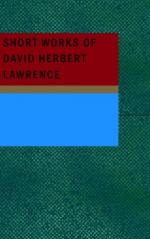|
This section contains 835 words (approx. 3 pages at 300 words per page) |

|
Myths and Legends in Modernism
The Modernist writers D. H. Lawrence and J. Joyce were primarily interested in the psychology of the modern man and the mystery of the human mind. They go back to the old myths and legends, thus trying with the help of these ancient archetypes to explain the darkest secrets of the human subconsciousness. For these reasons Lawrence in his novel "Sons and Lovers" uses the myth of Oedipus in order to reveal the split consciousness of a man who lives under great dominance of his mother, while James Joyce in "A Portrait of the Artist as a Young Man" creates an allusion of the mythological craftsman Daedalus and the disastrous fall of his son Icarus in order to present the life and ill fate of an artist.
In "Sons and Lovers...
|
This section contains 835 words (approx. 3 pages at 300 words per page) |

|


